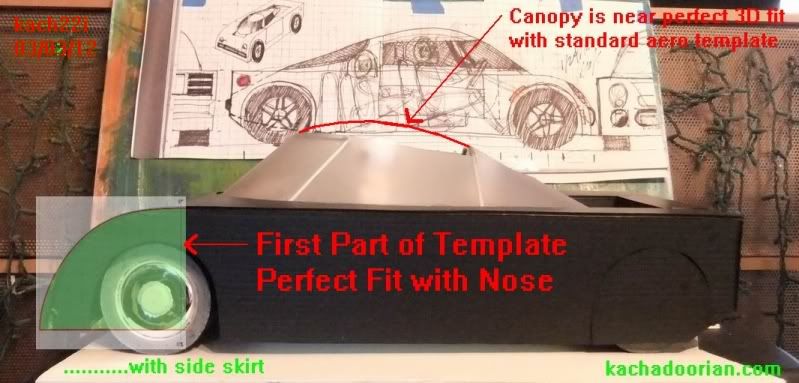Quote:
Originally Posted by kach22i

I looked up that particular Mclaren and it's a 2-seater, sorry.
My concept car's canopy fits the template, how would turning it backwards be an improvement?
The nose also fits the first part of the template, how would that work better backwards?
Industrial Design - Transportation pictures by kach22i - Photobucket

What I am doing is taking different parts of the car, which do different things and applying the aero-templates.
By maintaining a 2-part concept or strategy, each part can do it's job more effectively over that of globing it all together into one giant compromise. At least that's the theory I'm operating on right now. |
The thing about the 'template' is that it has to be taken as a whole.You can't divorce parts from it.
*Developed from a body of revolution,it has leading edge radii everywhere
*It has body side camber
*Its roof is fully integrated into the body.there is no distinguishing where one begins,and the other leaves off.
*The windshield in fully integrated into the body.
--------------------------------------------------------------------------
*on your model,you have no vertical leading edge radii.
*all the air is vectored over the vehicle,which will cause attached vortices at your front edges where the air is much slower.
*you have a minimum pressure just ahead of your fender crown,then again just ahead of max cross-section of the roof.
*the roof opening cannot support flow,so closing it is good.
*on the top sides the flow is flowing horizontal and the roof is inducing a downwash.There is no radii where the air would flow into the void below the wing so you're going to see a vena contracta there,with some of the flow choked off and extreme turbulence,which will kill the wing efficacy.
*low base pressure of the wake may communicate forward into the void which may induce spanwise flow on the top sides of body which in turn may induce attached longitudinal vortices as the side flow attempts to flow upwards over the top an into the void.
* since there is no plan-taper and side top is parallel to ground,the air will detach facing directly aft with a distinct burst,forming a rather large wake of low base pressure,as there are few surfaces for pressure regain.
*the open wheels aren't completely flush,so there'll be interference drag there.
*with no diffuser,you lose some opportunity there as well.
*Jaray's most effective combination form was with the very narrow car.I think it measured at around Cd 0.20.And it had very generous radii throughout.
*with you width and hard edges you could be pushing Cd 0.5+ territory.Without a tunnel it's hard to know.
The car would be a blast to drive but I don't know that you'd be rewarded at the pump.
